Rooted in the Forest: 35 Years of Conservation with Yu Huiliang
Updated:2025-09-04 Source:Shennongjia National Park
towering peaks, vast forests, and endless valleys, Shennongjia witnesses over a billion years of Earth’s evolution, forming a rare gene bank of species in the low-latitude region. Few dare to unravel its secrets, one unassuming young man left his hometown Xiushui in Jiangxi, hiking to the "Roof of Central China" to study its wildlife—and write his own conservation story. He is Yu Huiliang, a “Shennong Talent” who rose through the ranks of the Science Research Institute of Shennongjia National Park.
For twenty years, Yu Huiliang gave himself to Shennongjia. He honed himself into a true naturalist—one who knows, loves, and protects these mountains. Today, he stands as a living symbol of Shennongjia National Park’s enduring commitment to conservation. Initially arrived with simple gear, his youthful passion propelled him into the misty peaks, climbing towards the summit of his ideals. Today, he has investigated every ridge and valley of this land. He has carefully recorded the coordinates of countless species, memorizing their habitats and genetic codes like a living encyclopedia. Now, his life is forever intertwined with this vast forest. The title “Shennong Talent” is more than a resume highlight: It is a profound tribute to a heart beating in perfect rhythm with the forest.
Bound with the Mountains: A Life Devoted to Nature
Some connections in life seem fated. Yu Huiliang was born in Xiushui County, Jiujiang City, Jiangxi Province, a place bearing numerous resemblance to Shennongjia. One might say destiny had already woven his path into these mountains, where he would ultimately carve out his life’s work.
Nestled between the Mufushan and Jiulingshan mountain ranges in northern Jiangxi, Xiushui sits at the crossroads of three provinces: Jiangxi, Hunan, and Hubei. Growing up here, Yu drank from mountain springs, breathed the crisp forest air, and savored the bounty of the land. Shennongjia, in western Hubei, bridges Hubei and Chongqing. 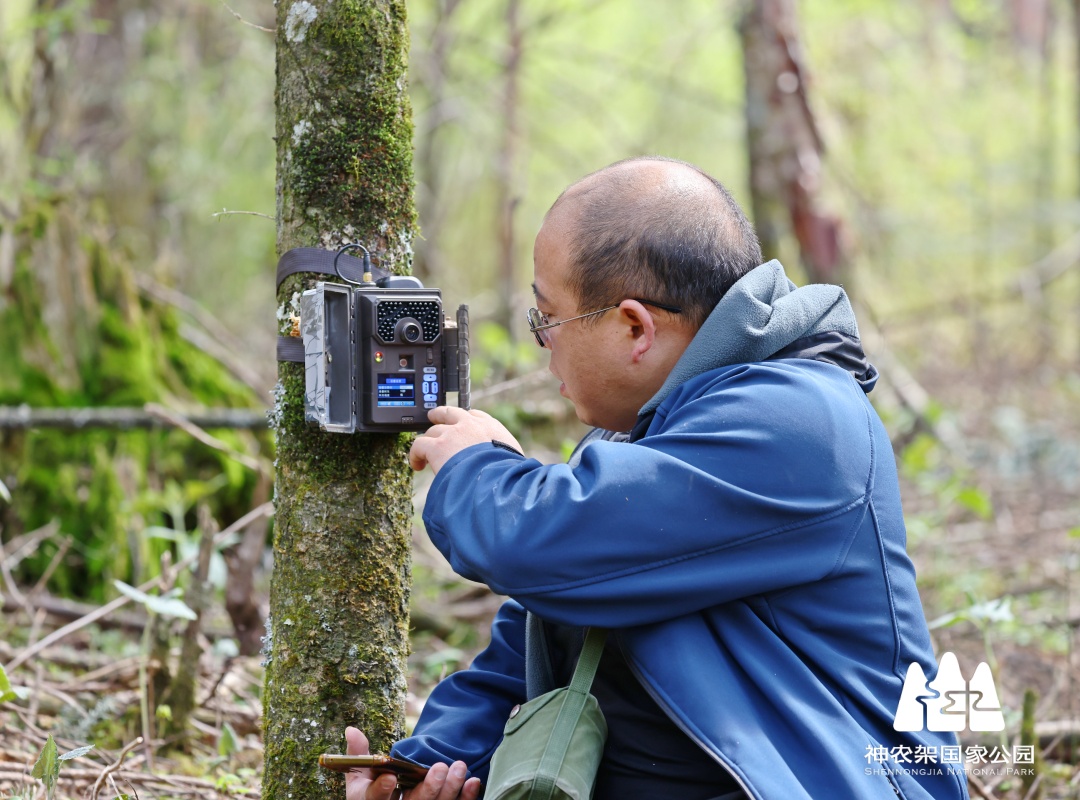
From Mufushan to Shennongjia, Yu has always been drawn to the mountains, as if his fate were intertwined with theirs. This choice reflects more than personal ambition—it embodies the enduring spirit of Xiushui people: resilience, perseverance, and an unyielding drive to push forward. Xiushui is a former revolutionary base where the first flag of the Chinese Workers’ and Peasants’ Revolutionary Army was designed and raised; the first division of the first army of the Chinese Workers’ and Peasants’ Revolutionary Army was formed; and the Autumn Harvest Uprising commanded by Mao Zedong fired its opening shot. Over 100,000 of the county’s sons and daughters sacrificed their lives for the revolution. Growing up amid these historic sites, Yu was steeped in tales of revolution and sacrifice, instilling in him a deep sense of resolve to contribute to China’s rejuvenation.
At first glance, Yu Huiliang doesn’t fit the image of a seasoned scientist. Unassuming in dress and speech, he exudes humility. Yet beneath that modesty lies a rigorous, relentless researcher, unwavering in his pursuit of knowledge.
Into the Wild: Taking Root with Passion
In July 2005, Yu Huiliang left the campus of Northeast Forestry University and set foot in Shennongjia, armed with solid expertise and a thirst for discovery. He joined the Scientific Research Institute of Shennongjia National Nature Reserve, ready to dedicate himself to the wilderness. The Nature Reserve established a special research team to study wild golden snub-nosed monkeys, aiming to overcome the challenge of close-range observation. Yu came abroad that November, bringing fresh expertise to the team.
Back then, the research station was a crude wooden cabin—relic of the logging era—with drafty walls and a leaky roof. But Yu and his teammates made no complaint. They patched the walls with newspaper, fixed the roof with spare planks, warmed themselves with firewood in winter, and endured swarms of insects in summer. With a grin, he told his colleagues, “I’ve loved nature since I was a boy. Shennongjia was my dream—so much so that I secretly changed my college major to Wildlife and Nature Reserve Management. Living here, I’m finally deep in the heart of the wild, closer to the subjects I study.” 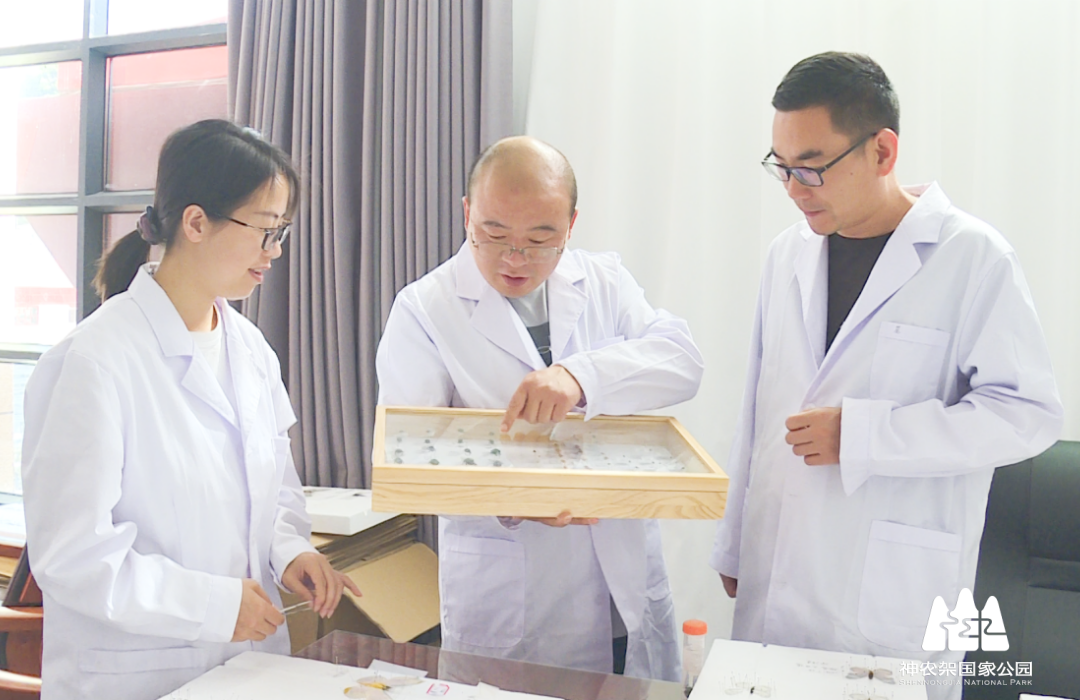
That smile lasted two decades. From youth to middle age, the forest became his home and the ecosystem his life’s calling. Colleagues often recall how the light in director Yu’s office burned late into the night—whether he was compiling field data or polishing research proposals. But more often, he was out in the wild: setting off at dawn with his camera, returning at dusk with mud-caked pants and a tired yet contented smile.
A Bond with the Monkeys: Smart Solutions to Research Challenges
Marking the easternmost edge of their range, Shennongjia holds special significance for golden snub-nosed monkeys. The species constitutes a unique population of Sichuan golden snub-nosed monkeys. Research on these China’s endemic primates is critically important, making their conservation a priority for Chinese zoological science.
But golden snub-nosed monkeys are skittish by nature, vanishing into the dense forest at the slightest disturbance. To study them, researchers needed sustained, close-range observation without altering their wild behavior, which was the biggest obstacle hindering progress. Undeterred, Yu Huiliang joined the golden snub-nosed monkey research team, diving headfirst into solving this puzzle.
The team set up in Dalongtan, a valley at 2,500 meters where deep gorges and lush vegetation supported rich biodiversity. Dozens of protected species—sika deer, forest musk deer, tufted deer, Chinese serow, yellow-throated marten, Asian black bear, and Temminck’s tragopan—thrived here. A large troop of golden snub-nosed monkeys roamed the area year-round, making it the perfect site for habituation efforts.
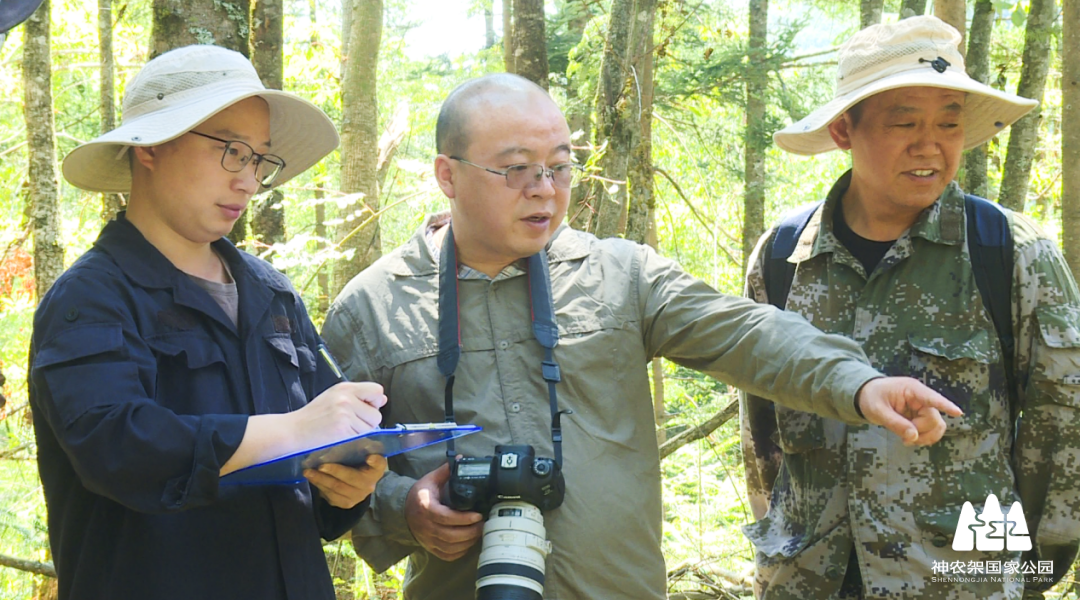
To reduce the monkeys’ wariness, Yu and his team embarked on grueling “stakeouts” in the forest. Day after day, they inched closer—from 500 meters to 300, then to just a few dozen. The team sweated for every inch of progress. In winter, when food was scarce, they experimented with feeding techniques, slowly winning the monkeys’ trust. The pivotal moment came when one bold monkey snatched an apple from their hands. Overjoyed, the team named it Dadan (“Big Courage”)—a mascot for their breakthrough.
Emboldened by Dadan’s example, more monkeys ventured down from the trees. After two relentless years, the team succeeded in habituating a troop of 80 golden snub-nosed monkeys in Dalongtan. With normalized interactions, Shennongjia National Nature Reserve established a permanent field research base there.
Each monkey was named and documented, with detailed records of social structures, hierarchies, and behaviors. Countless hours of rare footage were captured, laying a solid foundation for golden snub-nosed monkey conservation.
Research with Heart: Yielding Dazzling Discoveries
Two decades of relentless dedication have yielded fruitful achievements for Yu Huiliang. Leading or contributing to multiple national and provincial research projects, he has published over 30 papers in core journals at home and abroad, with more than 10 indexed in SCI. His groundbreaking work has earned him prestigious accolades, including the SUBARU Ecological Conservation Award from the China Wildlife Conservation Association and four Hubei Provincial Science and Technology Progress Awards.
Behind these honors lie countless days and nights in the wilderness. Field surveys and monitoring are his routine: observing golden snub-nosed monkey behavior at Dalongtan Base, meticulously placing infrared cameras in dense forests to capture rare wildlife moments. Mosquito bites are part of everyday life, so do predawn starts and late-night work sessions. As he often says, “Ecological data tolerates no falsification. Every figure must withstand the test of the wild.”
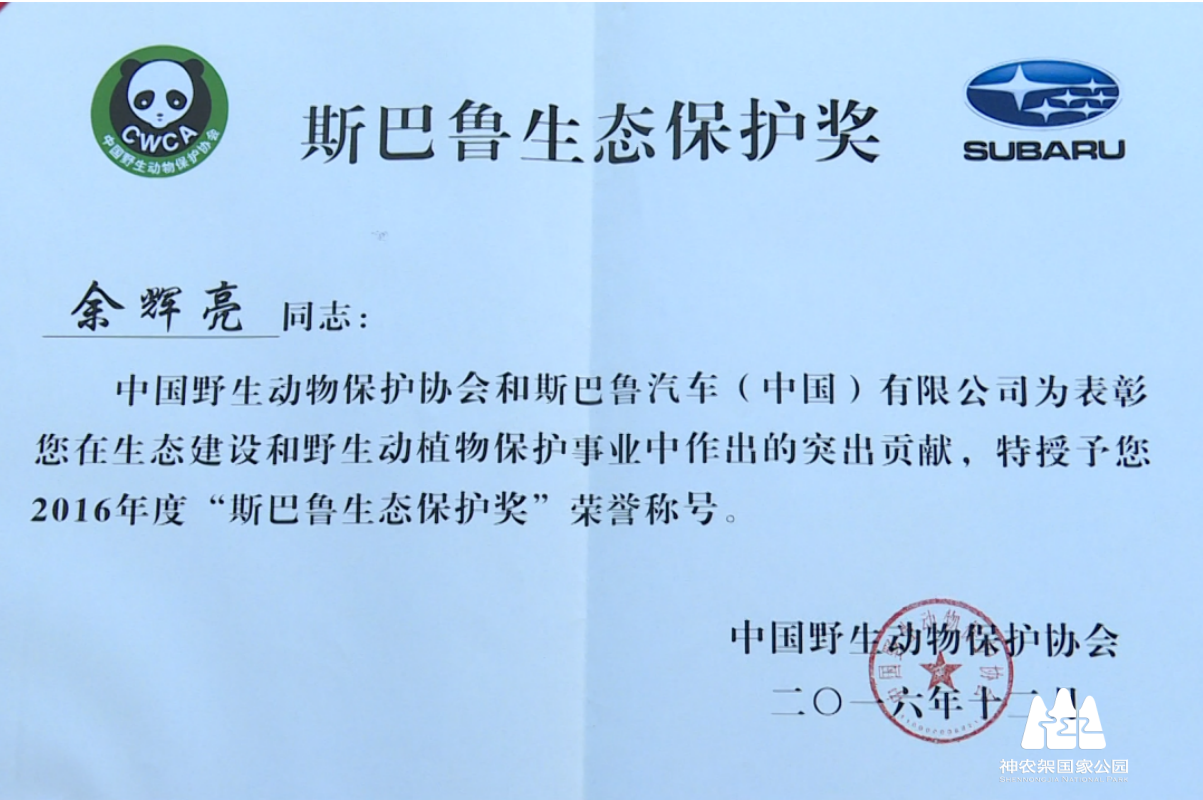
To date, over 2,000 infrared cameras have been deployed under his direction. Hidden deep in the forest, they have documented 136 wildlife species. The footage is a treasure trove: golden snub-nosed monkeys at play, forest musk deer darting through foliage, Reeves’s pheasants spreading their resplendent tails... These rare glimpses of dozens of nationally protected species are more than just hard-drive archives. They are living testaments to Shennongjia’s biodiversity, irrefutable proof of the national park’s conservation success. The data maps animal distributions and provides vivid evidence for studying their reproduction and growth.
Beyond research, Yu played a pivotal role in establishing Shennongjia National Park’s Natural Ecology Museum, transforming scientific findings into tangible exhibits. Through active public outreach activities, he has brought Shennongjia’s ecological wonders to the world.
Leading by Example: Inspiring Through Action
Yu Huiliang approaches his work with unrelenting precision, yet toward his colleagues, he radiates the warmth of a winter sun. “Director Yu is meticulous about infrared camera placement, even a slight angle or position deviation is unacceptable,” says colleague Mo Jiayong. “He always says, ‘When cameras face wildlife, they must capture them with the same care as our own gaze.’ On holidays, he quietly takes on extra shifts so we can be with our families. He doesn’t say many pretty things, but his thoughtfulness is as tangible as a gentle breeze.” To him, rigor isn’t about cold discipline, it’s about translating reverence for nature into exacting work, and into genuine consideration for others.
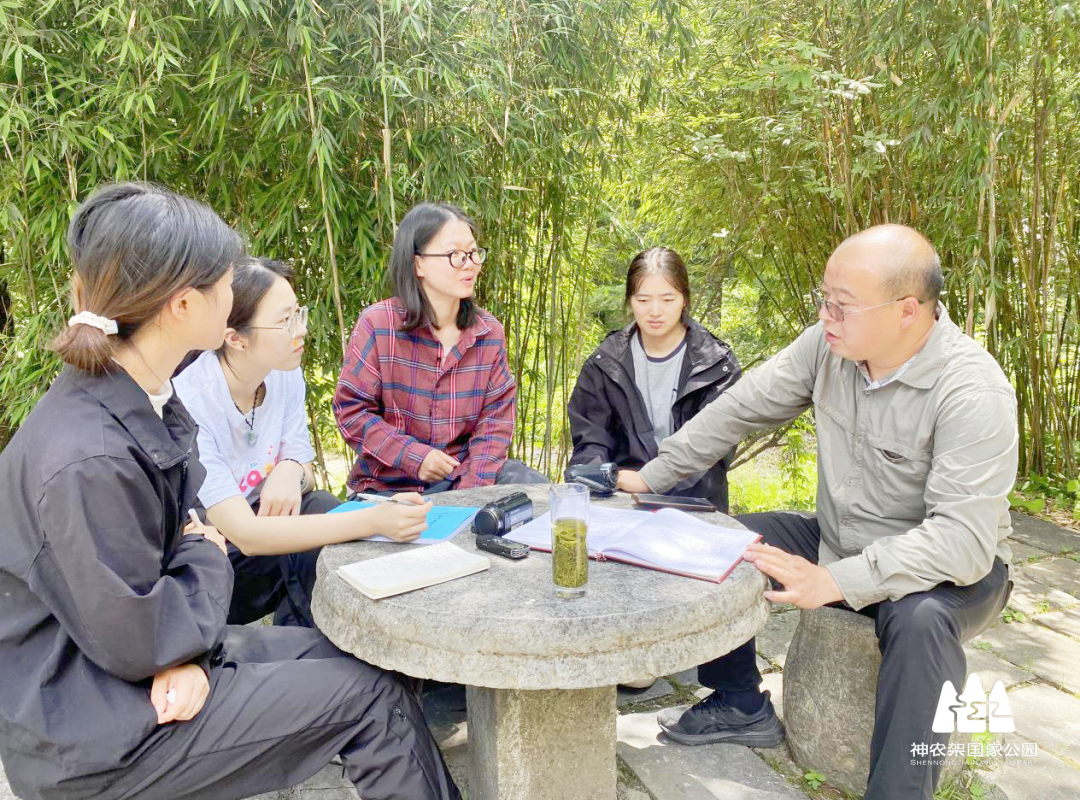
At Dalongtan’s golden snub-nosed monkey research base, Yu goes out of his way to mentor university students. “For over a year, Director Yu has joined us in fieldwork, sharing insights about the monkeys’ habits and quirks,” says Zheng Yongqi, a graduate student from Central South University of Forestry and Technology. “No question is too trivial as he answers with a teacher’s patience and a relative’s kindness.”
Yet for his own family, Yu carries quiet regret. Two decades of work have meant constant separation. His parents’ concern, his wife and son’s longing—all compressed into late-night phone calls. When his son was born, Yu rushed back only on the day of delivery; while the boy grew up in Songbai, it was usually his wife, Zhang Ling, who visited on weekends. Meanwhile, his office light burned deep into the evening. “Shennongjia’s ecosystem needs a guardian,” he often says.
Steadfast in Purpose: Ensuring a Legacy of Conservation
“Shennongjia is a global hotspot for biodiversity research—working here is my privilege.” Reflecting on two decades of dedication, Yu Huiliang’s eyes still shine with clarity and determination. His mission, he says, is to stay on the frontlines of wildlife monitoring, sharpen his expertise, and share Shennongjia’s ecological stories with the world, brick by brick contributing to a future of harmony between humanity and nature.
“Someone once asked me, ‘After twenty years, have you had enough?’ I replied: Ecological conservation isn’t achieved overnight—it demands persistence. The work is always on the way; It’s a mission that grows with the rings of the forest.” His voice was quiet but certain: “Every tree in Shennongjia sinks deeper roots; every golden snub-nosed monkey thrives. My eyes, my hands—they must keep pace, weaving a tighter net of monitoring, building stronger walls of protection.”
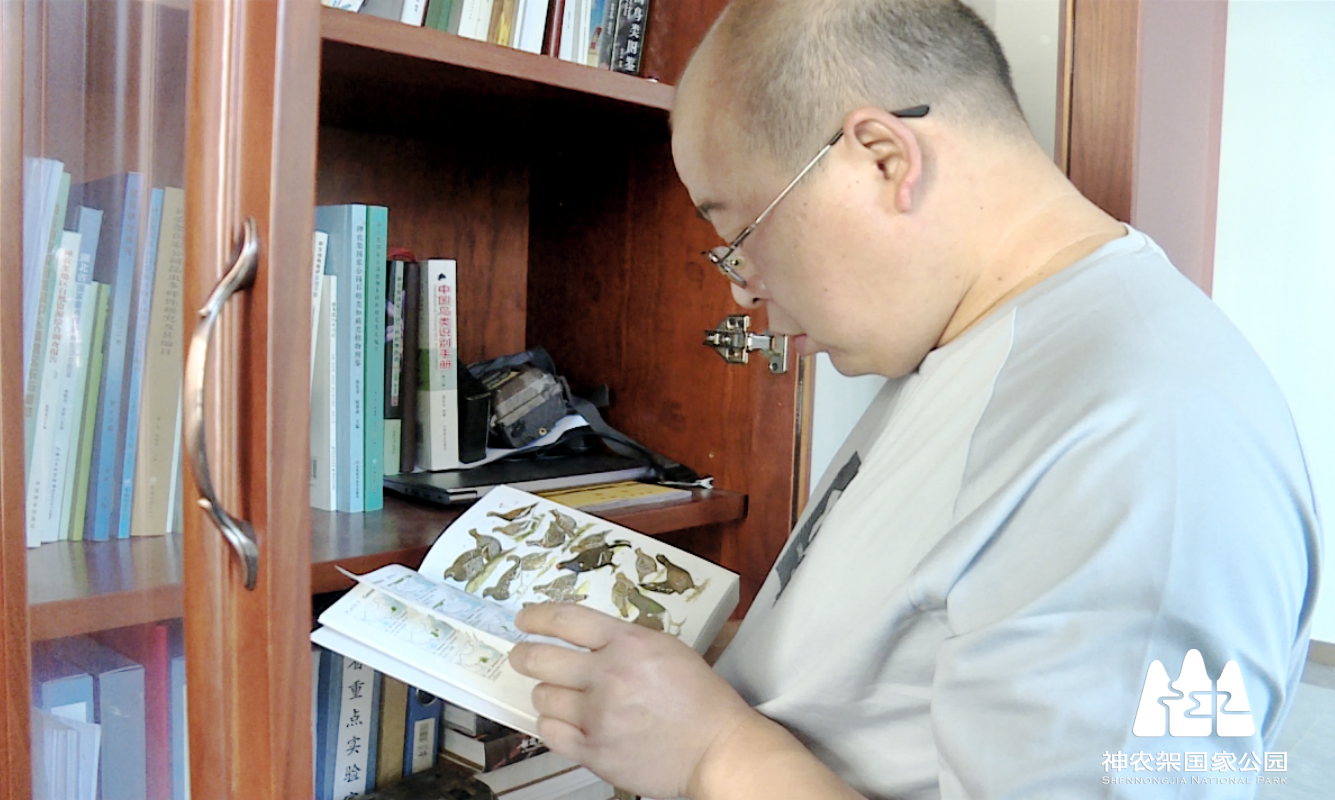
Yu’s greatness lies not in grand deeds, but in the quiet dedication of every ordinary dawn and dusk: predawn vigils in the woods, meticulous data revisions, earnest mentorship, the bittersweet trade-off between family and wilderness. His life whispers a truth: legend is simply the act of holding one purpose, one forest, one community of creatures close to the heart, season after season. And in that truth, the warmth of human-primate kinship and the devotion to the forests will continue writing splendid new chapters in Shennongjia’s conservation story.
(By Fang Zeyang, He Sai)
Address:36 Chulin Road, Muyu Town, Shennongjia Forestry District, Hubei Province 鄂ICP备18005077号-3
Phone:0719-3453368



